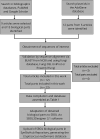Cryptococcus neoformans Database in Synthetic Biology Open Language
- PMID: 36000855
- PMCID: PMC9476951
- DOI: 10.1128/mra.00198-22
Cryptococcus neoformans Database in Synthetic Biology Open Language
Abstract
Cryptococcus neoformans is the etiologic agent of cryptococcosis, a lethal worldwide disease. Synthetic biology could contribute to its better understanding through engineering genetic networks. However, its major challenge is the requirement of accessible genetic parts. The database presented here provides 23 biological parts for this organism in Synthetic Biology Open Language.
Conflict of interest statement
The authors declare no conflict of interest.
Figures

Similar articles
-
[Cryptococcosis caused by Cryptococcus neoformans var. Gattii. A case associated with acquired immunodeficiency syndrome (AIDS) in Kinshasa, Zaire].Med Trop (Mars). 1992 Oct-Dec;52(4):435-8. Med Trop (Mars). 1992. PMID: 1494313 Review. French.
-
The ecology of Cryptococcus neoformans and the epidemiology of cryptococcosis.Rev Infect Dis. 1991 Nov-Dec;13(6):1163-9. doi: 10.1093/clinids/13.6.1163. Rev Infect Dis. 1991. PMID: 1775849 Review.
-
High Prevalence of HIV-Related Cryptococcosis and Increased Resistance to Fluconazole of the Cryptococcus neoformans Complex in Jiangxi Province, South Central China.Front Cell Infect Microbiol. 2021 Nov 1;11:723251. doi: 10.3389/fcimb.2021.723251. eCollection 2021. Front Cell Infect Microbiol. 2021. PMID: 34790585 Free PMC article.
-
[CAP59 gene amplification in Cryptococcus neoformans and Cryptococcus gattii directly from a yeast suspension].Rev Argent Microbiol. 2010 Apr-Jun;42(2):91-4. doi: 10.1590/S0325-75412010000200004. Rev Argent Microbiol. 2010. PMID: 20589327 Spanish.
-
Insights into the mechanisms of protective immunity against Cryptococcus neoformans infection using a mouse model of pulmonary cryptococcosis.PLoS One. 2009 Sep 3;4(9):e6854. doi: 10.1371/journal.pone.0006854. PLoS One. 2009. PMID: 19727388 Free PMC article.
References
-
- Mesquita da Costa M, Martins Teixeira F, Ribeiro Schalcher T, Thielli Figueiredo Magalhães de Brito M, Silva Valerio E, Chagas Monteiro M. 2013. Cryptococcosis, a risk for immunocompromised and immunocompetent individuals. Open Epidemiol J 6:9–17. doi:10.2174/1874297101306010009. - DOI
Grants and funding
LinkOut - more resources
Full Text Sources
